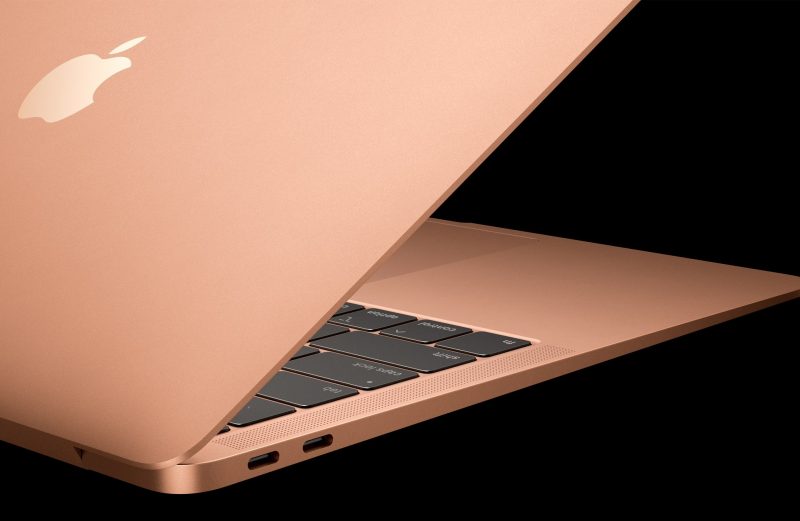The GoodThe MacBook is now smaller and lighter, with a better display, faster processors and a bigger touchpad. The MacOS experience and all-day battery are still big selling points.
The BadThe starting price has shot up significantly, despite sticking with dual-core CPUs. The shallow butterfly keyboard and limited ports may feel like a step back from the previous Air.
The Bottom LineThe MacBook Air’s long overdue makeover adds welcome additions like a high-res screen and Touch ID, but it includes some unwelcome trade-offs — including a much higher price.
8.1 Overall
- Design 9
- Features 7
- Performance 7
- Battery 8
Apple’s MacBook Air has gotten a much-needed reboot, keeping the name, but changing just about everything else, both outside and in. That means a new 8th-gen Intel Core i5 CPU, more RAM and SSD options, a high-res Retina display, and the move to USB-C Thunderbolt 3 ports. And while it’s still called the MacBook Air, this new version might as well be called the “MacBook Pro Lite,” because that’s essentially what it is.
For most of its 10-plus year life, the classic MacBook Air was the default laptop for pretty much everyone, from college students to creative types to startup entrepreneurs. For many years, I called it the single most universally useful laptop you could buy.
But over the years, the competition moved to higher-res displays, thin screen bezels, bigger touchpads, regular component upgrades, and thinner and lighter bodies.
While this reimagined MacBook Air fixes almost all of the previous design’s issues, it adds a couple of its own. It’s a much better fit with the rest of the current Mac design sensibility: Larger than the 12-inch MacBook, smaller than the 13-inch Pro, and much different from the classic Air, which Apple is still selling, at least for now.
That means the long-standing design, with its thick screen bezels, smallish touchpad, deep keys and multiple ports is gone. If anything, the new Air looks and feels like a half-step between the 12-inch MacBook and the 13-inch MacBook Pro.
Its price has jumped up to join the rest of the MacBooks as well. For most of its life, the Air was $999. Not cheap, but a reasonably achievable luxury, especially for a rock-solid laptop that could last years.
It takes a period of adjustment to get used to the subtle tactile feedback, but once you do get used to it, it’s fine for even long-form typing. But yes, you may never grow to love it.
The payoff is that the new Air also includes a much bigger touchpad, of the same Force Touch style as on other MacBooks. That means it doesn’t have a diving-board hinge on the back, and instead uses four corner sensors to register clicks, allowing the body to be thinner.

